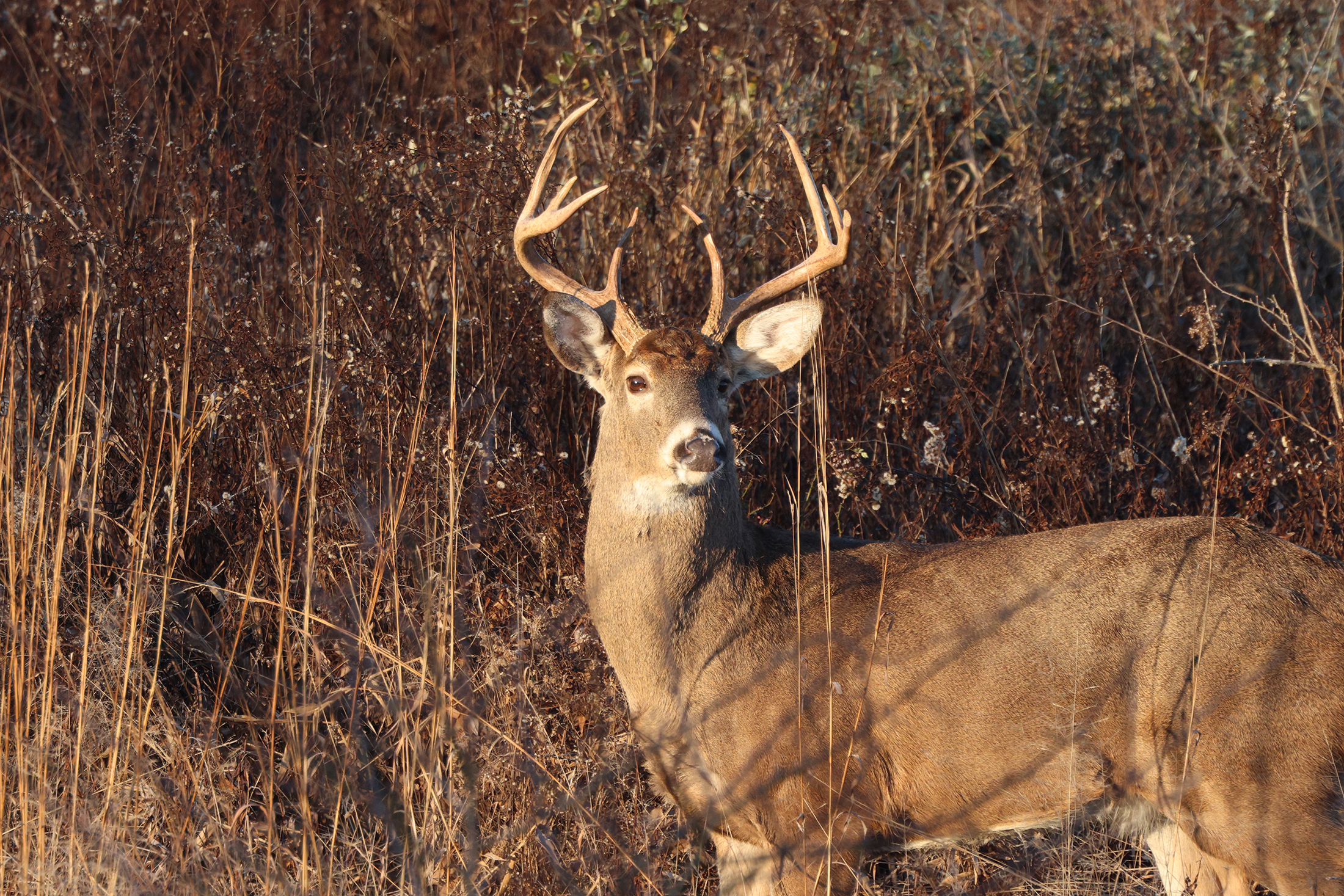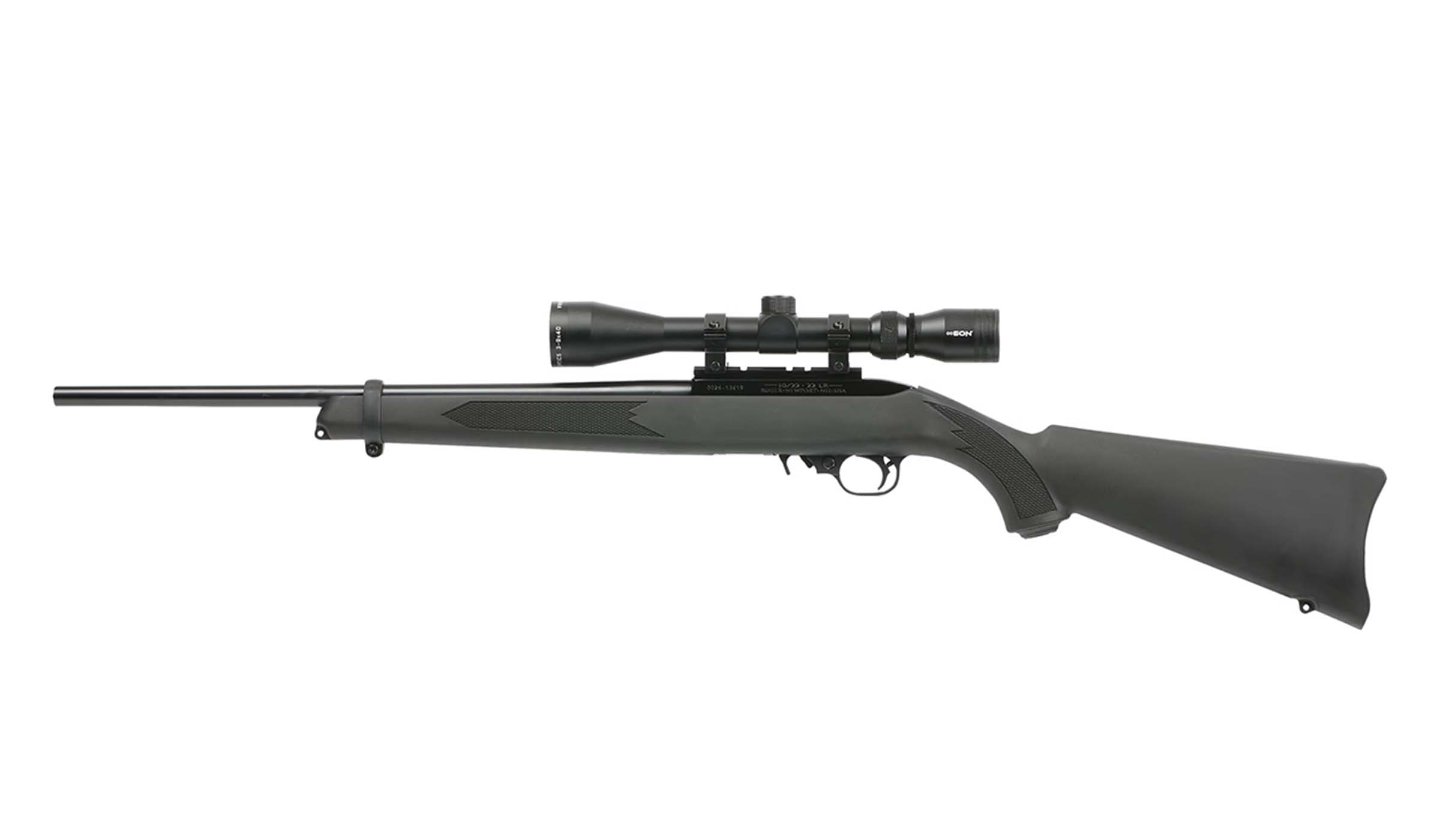Beaten, bruised, and a bit smarter than it was on opening day, the old buck slowly moves from his bed. The sun just set, but he’s not anywhere close to a big field yet.
Keeping it in low gear, the deer alternates between taking a couple steps and scanning its surroundings. On pins and pine needles, the buck nears the edge of the bedding area, hits a smaller trail other deer rarely use, and sets course for the distant standing soybean field.
Sitting high in a tall cedar tree, you wait for any sign of the big 10-pointer you’ve been after all season. Any moment now…
Suddenly, you see the front legs of a deer standing in the timber on the hill above. Seconds turn into minutes, and the deer doesn’t move. Finally, it covers a few more yards, and that big 10-point rack comes into view. Only 50 yards separate the late-season hunter and the buck — all because he focused on patterning a late-season buck. Here’s how to do it.
Stop and Think
Some elements of patterning a late-season deer take place before the hunt. It’s a good time to reassess the situation, reflect on the past, and take a new approach.
Hunt new spots. Late season deer are especially wary. At this point in the season, some deer have been shot and shot at. Virtually all deer have felt pressure, so it’s crucial to spend some time scouting areas that weren’t hunted previously. Oftentimes, it’s these places deer slink into during the late season. Even if these spots seem less than perfect, it’s worth scouting them.
Reflect on the Past: Consider past seasons and how deer behaved then. Refer to trail camera intel and sightings of deer in the field. Digging into the details of past seasons will help you understand current and future deer movement. If conditions and habitat factors and food sources line up similarly to how they have in the past, deer should exhibit similar patterns. This takes a lot of the guesswork out of game planning.
Study Lines of Movement
Effective deer hunting is all about knowing whitetail lines of movement. Studying the lines that take whitetails from point A to point B is crucial for selecting a high-odds stand or blind location.
Locate the food. Food drives late-season deer behavior. Locate the food, and you find the deer. That said, deer place emphasis on the limiting resource factor. If safe bedding cover is scarce, they’ll find what’s available and travel farther to reach food. If safe bedding cover is abundant, they’ll bed closer to the available food.
Hunt a late-season kill plot. It’s too late to plant now, but if you planted a late-season food plot, it’s time to cash in. Standing corn, standing soybeans, winter wheat, turnips, and much more, make excellent late-season food sources for whitetails. Placing a winter food plot in a strategic location, such as near solar or thermal bedding cover, is a solid play. It can make the patterning process much easier.
Save a food plot. As fall gives way to winter, and food sources wane, deer hammer what’s left. The only way to keep a food plot viable into the late season is to prevent deer and other critters from consuming it earlier. That requires planting the right plant species (like brassicas), keeping deer out (with an electric exclusion fence), and opening it up at just the right time. Thus, you’re saving a food plot for the final days of the season.
Find the thermal bedding. Deer use certain types of bedding cover to combat the winter cold. The most common is thermal bedding (especially in flatter areas without much topography). This comes in the form of cedars, spruce, and pine trees. These evergreens shield deer from the rain, sleet, and snow. Furthermore, these thick plants block bitter-cold winds. Equally impressive is that the air temperature is several degrees warmer amidst the conifers.
Identify south-facing slopes. Deer also benefit significantly from the sun. Because the winter sun rises in the southeast, and sets in the southwest, the southerly face of the slope will be warmer on sunny days. So long as deer aren’t pressured there, it should be the primary deer bedding spot for the general area.
Glass from afar. Even in today’s world of cellular trail cameras, the age-old tactic of sitting down and raising the glasses is still a good one. You’ll need open country like fields that serve as primary food sources.
Watch a buck’s route. To pattern a deer is to know its general whereabouts and habits. These include bedding areas, food sources, water sources, staging areas, and the travel routes in between. By watching a buck’s route in person, scouting for tracks, or monitoring via trail cameras, hunters can watch a buck’s route and make firm plans after identifying the target.
Reposition trail cameras. While in the field scouting for deer sign, positioning stands, filling feeders, and completing other tasks, go ahead and set up some new trail camera locations. Where legal, focus on the cellular variety. If cameras that were productive early season have gone dead now, don’t be afraid to move them to more promising spots.
Execute the Plan or Call an Audible
After determining your target buck’s lines of movement, it’s time to make a move. Put the plan in motion, or call an audible as needed.
Still hunt the edges. While still hunting works best during the rut when deer are more distracted, it can be effective during the late season, too. If you’ve had trouble patterning a late-season buck, consider still hunting. Moving slowly, yet covering ground, might help piece together remaining clues to hunt a deer you know about, or help find a new one altogether. Still hunting is especially effective for morning hunts, when it’s often difficult to hike straight into a stand location without spooking deer.
Read Next: The Case for Ditching Your Treestand and Hunting from the Ground
Track down your buck. A fresh blanket of snow makes for prime tracking conditions, and if you have an idea about a buck’s travel lines, tracking becomes a lot easier. Go slow, and keep your eyes peeled. Chances are good he’ll see you first, but move slowly enough, and you’ll have a chance at a shot.
Read Next: How to Track Deer
Be mobile and flexible. Whether you are hunting from a treestand, hunting blind, or still hunting through cover, remember to be flexible. Be patient and execute your plan, but don’t be so attached that it stays in motion even after it becomes clear another tactic is better. Remember that each deer hunt is its own unique experience. Thus, hunters should always implement tactics based on the situation.
Final Thoughts on Patterning a Late-Season Buck
Late-season deer hunting is no cakewalk. Deer are skittish and the bitter cold can be tough to endure. Nonetheless, hunt hard, and you just might bag a buck. Focus on new, unpressured spots, protected bedding areas, and primary food sources to finally punch that buck tag.
Read the full article here




